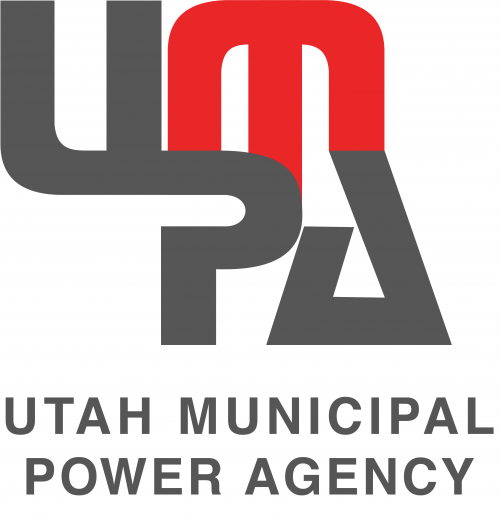
LAYNE BURNINGHAM
Chief Operating Officer General Manager
Manager’s Report
Fiscal year 2016 was conceivably the greatest period of Agency accomplishments since 1985 when UMPA’s members signed power sales agreements and the Bonanza resource was acquired. Over the past few years, UMPA’s members have addressed some difficult issues. Our primary challenges were to address and find solutions for our near future shortage of peaking resources and the expiration of the original member power sales agreements, which were set to expire within 10 years in 2025. These issues could have divided UMPA’s members, but instead they brought us together. Through many face-to-face meetings, honest discussions and genuine listening, the members found compromises when needed and solved problems in a collaborative way that is far too uncommon in today’s political environment.
Amended Agency and Member Agreements
Paramount to the continued future and success of our members’ joint action relationship was to collaborate and endeavor to extend, and renew, their association. It was a time to reflect and contemplate the value of UMPA to their individual public power utilities and to their communities and customers. This was a necessary undertaking for several reasons. First, with the Agency’s contractual obligations to members ending in 10 years, our long-term planning horizon, the options to be considered, and the decisions that would be made would be considerably different. Second, any long-term financing necessary for acquiring generating assets would not be possible. Third, if UMPA were to be dissolved, the members would need to determine their individual course and begin planning for their respective utilities power resources beyond 2025.
To their credit, UMPA’s members decided to extend the life of the Agency and amend their respective power sales agreements. The amended agreements included the following: 1) The Interlocal Agreement extended the existence of the Agency 50 years and was updated to reflect changes in state and federal law. It also granted additional powers to the Agency as an Energy Services Interlocal Entity under Utah code, 2) Power Sales Agreements were extended 50 years and were modified to allow individual member distributed generation in limited quantities, and 3) Capacity Purchase Agreements, whereby member owned generation is dedicated to the Agency, were extended to match the other agreements. The amended agreements became effective on January 1, 2016 and will terminate on December 31, 2065.
West Valley Power Plant Acquisition
After a lengthy power supply needs analysis, a power resource options investigation, and asset purchase negotiations, the Agency acquired the West Valley Power Plant in Utah – a 217 MW simple cycle, natural gas peaking resource consisting of five GE LM6000 units. This acquisition will meet UMPA’s peaking resource needs for the foreseeable future and will enhance our ability to integrate intermittent renewable resources into our resource portfolio. An asset purchase agreement was approved by UMPA’s Board of Directors in April, 2016 and the transaction closed August 1, 2016 after approval by the Federal Energy Regulatory Commission.
New Provo Plant
The “old” Provo Plant, a member dedicated resource, consisted of four reciprocating engines with a total of 10 MW of capacity. The plant was utilized for peaking power purposes and managing transmission costs of the Agency. It was also the location of the Agency’s operations and scheduling center staff. The facility was originally a coal fired generating plant built in 1940. Due to aging infrastructure, maintenance, and seismic concerns, member Provo City made the decision to demolish the plant in conjunction with a complete renovation of the Provo City Power campus. Due to the unique role this facility provided in our resource mix, UMPA’s Board of Directors approved a construction agreement with Wheeler Power Systems to build a new power generation plant at the same location. The Agency’s new 12 MW plant will consist of five Caterpillar natural gas engines equipped with best available control technology for low emissions. The plant will be operated to achieve the benefits of the decommissioned plant and can provide peaking capacity below the operating minimums of a single unit at the West Valley Plant.
New UMPA Office Building
Due to the need to relocate UMPA’s operating and scheduling center staff because of the retirement of the old Provo Plant, and the lack of sufficient space in our current administrative office, it afforded the Agency the opportunity to combine all of our staff and functions into a single, centralized location and, further, promote more efficient operations. After exploring several options, the Board approved a new location and the construction a new office building. The building is anticipated to be complete in April, 2017 and was designed for serving the Agency’s needs for the next 50 years.
Rate Stabilization and Reserve Fund Policy
Fiscal year 2016 marks the second year of a defined and budgeted contribution to the Agency’s rate stabilization fund. In May, 2016 UMPA’s Board of Directors formalized an Agency policy that is designed to promote long-term financial security by setting reserve target levels at an appropriate amount of cash reserves and a plan to attain and maintain the required reserves. The policy will provide greater rate stability for our members and provide flexibility when confronted with unforeseen expenses or capital needs. The target level of the rate stabilization fund, combined with other working capital accounts and funds, is 120 days of operating expenses. The budgeted, defined contribution for FY16 was $1,470,249. Further, as provided for in the policy, the Board elected to contribute additional funds at year-end of $747,176 as member’s wholesale power rates from UMPA were 3.8% under budget. The additional contribution augmented the annual defined total by 51%.
Forward Horizon
UMPA has future resource needs due to expiring power supply contracts and continued growth within our member cities. As we further refine our power needs and type, we remain focused on our mandate to develop a reliable and economic power supply program to meet the obligations of our members.
Consumer interest in renewable energy, particularly solar, continues to grow. Not every customer that is interested in solar is able to install a roof-top system. For some, the installation cost is too high. For others, they don’t own a single-family home or their roof is not ideally suited or capable of supporting solar panels.
As an alternative to rooftop solar projects, utilities are analyzing and investing in utility-scale solar projects. This is where multiple entities, including utilities and their customers, work together to fund a large, utility-scale solar installation and share the electricity output. A benefit to this arrangement is providing a solar option for customers who otherwise couldn’t do it themselves. In addition, a larger utility-scale solar project is more cost effective, produces more energy per installed kW, and are better integrated with the utility grid.
UMPA has begun the investigation of a utility-scale solar projects for our members. Solar power can and should be part of our energy portfolio. UMPA’s member cities are working on ways to provide a cost-effective option for customers that addresses the limitations of rooftop systems.
By most measures, fiscal year 2016 was an active and successful year for the Agency and our members that we serve. We have worked through tough decisions, and the results speak for themselves. Our plan is working, because we are working together. That is the benefit of public power. It works.
Layne Burningham
Chief Operating Officer
General Manager
